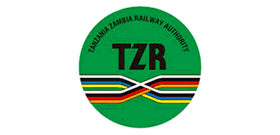 TAZARA traffic volumes surge on back of open access
TAZARA traffic volumes surge on back of open access
The arrival of open access freight operations on the state-owned TAZARA Railway will not only boost traffic on the railway but also generate funds for much-needed maintenance, say private operators.
Trains have recently started running the full length of the 1,860km line following the reopening of the Chambeshi River bridge in Zambia, in September after a year-long shutdown for repairs.
With the bridge out of action, trains were restricted to operations on each side of the river, forcing shippers to use trucks to and from a temporary railhead near the Zambian town of Kasama instead. With the line now open throughout, traffic is already starting to pick up as trains begin running.
Two open access concessions have been awarded to private operators in recent years.
The first private operator on the line was Calabash Freight, which was awarded a concession in February 2018. In late 2021, the second open access concession was awarded to Africa Inland Container Depot Logistics (AFICD).
AFICD is a joint venture between Usango, a Tanzania-based trucking company, and the Lake Group, a heavyweight East African logistics and fuel conglomerate.
“We partnered to get into this business,” Usango CEO - Saad Ismail told Railways Africa.
Like Calabash, AFICD will also concentrate on minerals and chemicals traffic between Zambia and DRC and Dar es Salaam. “We are currently focused on handling chemicals, predominantly sulphur, to go to the mines in Zambia and DRC, and coming back with metals,” said Ismail.
Despite speculation that another concession could result in operators going toe-to-toe for scarce business, the reality is that there is plenty of traffic to go around, Calabash Freight CEO - Nimon Zulu told Railways Africa. “There is so much traffic between Zambia and Tanzania,” he said.
Zulu noted that higher traffic levels would mean more revenue for the TAZARA Authority which in turn would mean there were more funds available for maintenance. “The maintenance has not been 100% as they [TAZARA] have not had the finances,” he said.
The closure and prolonged $1.6 million repair of the Chambeshi River bridge was a reminder of how vulnerable the single-track railway is to disruptions such as track damage and derailments.
While the bridge remained out of action, Calabash had resorted to a bimodal solution, using trucks to carry product from the mines to a rail transhipment hub near Kasama. AFICD, meanwhile, was currently running two trains monthly instead of the 10 it had planned to, accounting for some 6,000 tonnes of freight a month.
“Our plan was to have 10 trains operating by the end of the year,” said Ismail.
“But we could not as there were a lot of limitations on moving trains on the line because of the bridge,” he said. AFICD hoped to rail about 30,000 tonnes each way per month once the railway was operating efficiently.
Calabash, which leases locomotives and wagons from Traxtion, was aiming to run three trips per month with each of its four consists. “If the infrastructure was perfect we could push for four,” said Zulu.
Each set consists of 24 wagons although Zulu would prefer 36 wagons. Trains run with relief crews and maintenance staff travelling in a caboose. AFICD was also investing heavily in a logistics hub in Dar es Salaam. The facility includes a bulk sulphur terminal where bulk sulphur is received from the port and bagged before onward shipping by rail.
The facility is also used as a transhipment point for metal exports which are loaded into containers before being hauled to the harbour, using AFICD’s own shunting locomotives and flatcars. “We are the only company that has a full supply chain,” said Ismail, adding that AFICD was halfway through a “huge investment” into the facility.
AFICD was also acquiring its own fleet of diesel locomotives and wagons for mainline operations. “These are being delivered now,” said Ismail.
Although he declined to name the supplier on grounds of confidentiality, Ismail noted the work was being carried out on the continent. Meanwhile, AFICD was looking forward to boosting traffic volumes on the line, he added. “Then TAZARA will make more money and they will be able to upgrade this line because we really need it to work.”
The railway was operating far below its nameplate capacity of 5 million tonnes a year, he added. “It’s constantly operated below that level,” he said.
While opening the railway to private operators had boosted freight volumes, it also posed an upside risk for investment in the line’s maintenance, according to a 2021 report by Fitch Solutions. In the 2018/19 financial year, when Calabash began operations, freight volumes on the railway rose by 60% compared to the year before, the report said.
Calabash transported 197,000 tonnes while Tazara carried 182,000 tonnes in the 2019/20 financial year. This was 4.5% up on the previous year, Fitch added.
In the 2020/21 year, the figure jumped by 26.6%. The improvement in capacity utilisation would likely encourage TAZARA to offer more open access to other rail operators, said Fitch. This would boost the line’s overall utilisation as well as contribute much-needed revenue to TAZARA from access fees.
Most of the increased traffic will be driven by Zambia’s growing copper production. Fitch estimated copper output would jump to 1 million tonnes by 2029, up from the 880,000 tonnes forecast for 2022.
